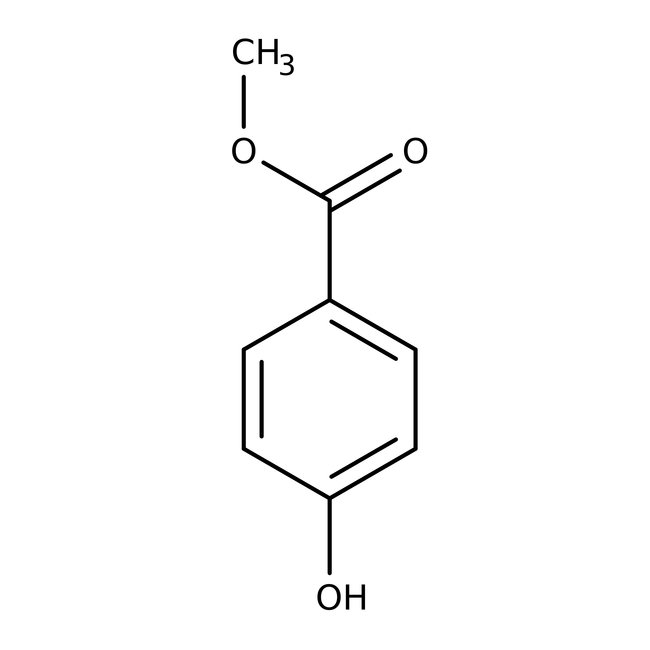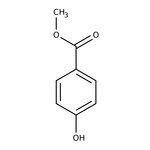Search Thermo Fisher Scientific
Thermo Scientific Chemicals
Methyl 4-hydroxybenzoate, 99%
CAS: 99-76-3 | C8H8O3 | 152.149 g/mol
Catalog number ALFA14289.30
View Price:Sign InSign in to see your account pricing. Need an account? Register with us today.
Quantity:
250 g
Specifications
Chemical Name or MaterialMethyl 4-hydroxybenzoate
CAS99-76-3
Melting Point125°C to 128°C
Recommended StorageAmbient temperatures
RTECS NumberDH2450000
View more
Methyl 4-hydroxybenzoate is used as an anti-fungal agent. It is also used as a preservative in foods, beverages and cosmetics. It acts as an inhibitor of growth of molds and to lesser extent bacteria and as a vehicle for ophthalmic solution.
This Thermo Scientific Chemicals brand product was originally part of the Alfa Aesar product portfolio. Some documentation and label information may refer to the legacy brand. The original Alfa Aesar product / item code or SKU reference has not changed as a part of the brand transition to Thermo Scientific Chemicals.
Applications
Methyl 4-hydroxybenzoate is used as an anti-fungal agent. It is also used as a preservative in foods, beverages and cosmetics. It acts as an inhibitor of growth of molds and to lesser extent bacteria and as a vehicle for ophthalmic solution.
Solubility
Slightly soluble in water.
Notes
Incompatible with strong oxidizing agents and strong bases.
Methyl 4-hydroxybenzoate is used as an anti-fungal agent. It is also used as a preservative in foods, beverages and cosmetics. It acts as an inhibitor of growth of molds and to lesser extent bacteria and as a vehicle for ophthalmic solution.
Solubility
Slightly soluble in water.
Notes
Incompatible with strong oxidizing agents and strong bases.
RUO – Research Use Only
General References:
- Luo, H. Y.; Zhang, M.; Si, N. C.; Meng, M. J.; Yan, L.; Zhu, W. J.; Li, C. X. Molecularly imprinted open porous membranes made from Pickering W/O HIPEs for selective adsorption and separation of methyl 4-hydroxybenzoate. Chin. Chem. Lett. 2015, 26 (8), 1036-1041.
- Santos, I.; Ramos, C.; Ramos, J.; Oliveira, R.; Cunha, I. Efficient Association between PGF2α and Methyl 4-hydroxybenzoate Sex Pheromone Prior to Electroejaculation in Dogs. Reprod. Domest. Anim. 2013, 48 (1), 160-164.



